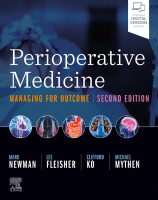Physical Address
304 North Cardinal St.
Dorchester Center, MA 02124

* Previous edition author. Oliguria is a one of the commonest clinical problems encountered by critically ill patients. The prevalence of the problem has been difficult to establish because of a wide variety of definitions used in the literature. Some…

Introduction A rapid decline in glomerular filtration evidenced by the accumulation of nitrogenous waste products (blood urea nitrogen and creatinine) reflects acute kidney injury (AKI), a common major medical problem that occurs in 7%–18% of hospitalized patients including 50%–60% of…

Overview The approach to perioperative fluid therapy has changed markedly over the last 40 years. This has followed the change in approach by surgeons recognizing that by reducing primary injury and blood loss during surgery the physiological impact for the…

Introduction Cardiac dysrhythmias are quite common in the general population. In fact, approximately 33 million people worldwide experience atrial fibrillation, and the leading cause of sudden cardiac death is ventricular tachyarrhythmias. From 2003 to 2015, there were approximately 312.6 million…

Preoperative Assessment Valvular heart disease (VHD) is frequently observed in patients undergoing surgery. As the medical and minimally invasive management of coronary artery disease increases, the number of patients with untreated advanced valvular disease is likely to supersede the number…

Perioperative Myocardial Ischemia and Infarction Definition Perioperative myocardial ischemia is difficult to define, as it represents a continuum with clinically irrelevant events at one end of the spectrum and myocardial infarction (MI) leading to complete ventricular failure at the other…

Introduction Perioperative myocardial infarction (MI) is the most common cause of death in the early postoperative period. Perioperative ischemia can be caused by either acute coronary thrombosis or by a mismatch between myocardial oxygen supply and demand. While the inflammatory…

The development of the heart-lung machine by John and Mary Gibbon over a half-century ago ushered in the modern era of cardiac surgery. Prior to 1953, the emerging field of heart surgery was limited primarily to brief operations conducted on…

Hematologic risk assessment (HRA) involves evaluating and managing needs for red blood cell (RBC) transfusion as well as the integrity of a patient’s coagulation ability, including intrinsic bleeding disorders or coagulopathies and anticoagulant or antiplatelet medications. HRA is an essential…

Introduction Postoperative pulmonary complications (PPCs) have undeniable clinical relevance because they are frequent and impose a significant burden of perioperative morbidity and mortality. The reported incidence of PPCs varies considerably among studies, from 2% to 40%, with several risk factors…